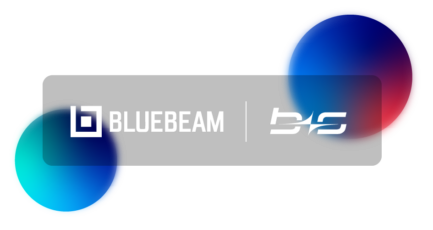Bucher + Suter and Bluebeam recently won the Dynamic Duo – People’s Choice award at Cisco’s WebexOne 2025 conference. The Dynamic Duo award recognizes a Cisco partner and Webex partner for their creative implementation of Webex solutions.
You can read the full Bluebeam case study here.
But here’s what makes this award worth talking about: it’s rarely the technology itself that earns customers and partners recognition. Successful contact center implementations are determined by the quality of the partnership between customer and integrator.

A Dynamic Duo Is About More than Internal Wins
New innovations. Market share. Eye-popping customer satisfaction scores. They’re all worth celebrating, but awards that do so are inherently vendor centric. How far would Rolex’s Wilsdorf have gotten without Davis? Jobs without Wozniak?
Dynamic Duo is recognition that exceptional outcomes in any venture require two parties operating in lockstep. In the world of contact center transformation, that means:
- A customer willing to challenge their own assumptions and processes
- A partner willing to do more than just implement what’s requested
It’s also recognition of a truth that our industry often glosses over:
You can’t purchase high-performance partnership the way you can buy technology.
You can’t buy collaborative problem-solving, mutual accountability, and honest communication fundamental to projects that improve how organizations serve their customers.
What does that relationship model actually look like in practice?

How Trustworthy Partnerships Are Built
Peek under the hood of Cisco’s Dynamic Duo finalists and you’ll likely find a common constant: an operational framework that spans every function, from sales conversations through post-sale customer success.
Our own sales engineers are frequently regarded as the most trusted people in the room during evaluation cycles—by customers themselves—not for their quick wit and persuasive salesmanship. It’s their commitment to providing honest assessments of what will and won’t work for specific business contexts.
That’s the kind of commitment that needs to extend across the entire organization. Any organization can build this kind of culture—or evaluate whether their current partners operate this way.
Here’s what to look for:
Trust vs. Transaction: A Quick Evaluation Framework
|
Transactional Relationship |
Trust-Based Partnership |
|
Only highlights capabilities and quick wins |
Discusses project risks and limitations openly during sales cycle |
|
Mentions “support team” generically without commitment |
Assigns dedicated resources (by name) who will provide post-implementation support |
|
Assumes integrations will “just work” |
Binding regulatory guidelines issued by the Swiss Financial Market Supervisory Authority that specify detailed requirements for how banks, insurers, and other financial institutions must implement Swiss financial laws. |
|
Agrees to everything in scope document regardless of fit |
Explains why certain approaches won’t deliver expected ROI for a given use case |
|
Goes quiet after go-live unless in response to a support ticket |
Maintains regular contact post-deployment to optimize performance |
|
Keeps conversations at sales/account management level only |
Brings subject matter experts into conversations based on specific challenges |
|
Presents “starting at” pricing with vague disclaimers about additional costs |
Providers transparent pricing that accounts for plans to scale |
Throughout our work with Bluebeam, both organizations prioritized honest communication over comfortable conversations. That means flagging concerns early, adjusting the approach (when initial plans proved suboptimal), and maintaining alignment on business objectives (rather than project deliverables alone).
Counterintuitive Trust Mechanism: Honesty Over Perfect Execution
Vendors are naturally more inclined to showcase wins than they are challenges. This tendency is rooted in the belief that admitting struggles will erode client confidence. The research on workplace trust tells a different story.
In individual or group workplace settings, admitting mistakes, asking for help, and sharing challenges actually creates a trust loop. It’s called the “pratfall effect.” Similarly, you signal vendor-partner trustworthiness when you openly discuss risks or implementation challenges.
Well-handled adversity can create stronger loyalty than absolute perfection.
And as anyone in the contact center industry knows, adversity will come. Implementations routinely encounter unexpected integration complexities, data migration challenges, and obstacles to user adoption. Be transparent about these challenges—commit to facing them together—and you have the main ingredients of an enduring, high-performance partner relationship.
Green Flags to Look for In Each Phase
Most contact center leaders inherit vendor relationships or face pressure to choose based on feature checklists and pricing. Add these green flags to your mix of partner evaluation criteria:
|
Sales Cycle |
Implementation |
Post Go-Live |
|
|
|
Building Your Own Dynamic Duo

The chance to stand on stage with Bluebeam at WebexOne reminded us of something fundamental: high-performance partnerships prioritize the right outcome over the comfortable path—for both parties. The contact center landscape is full of capable vendors offering sophisticated platforms. The differentiator often comes down to this level of partnership quality, rather than feature sets or pricing models.
If you’re evaluating contact center technology partners right now,
use the trust framework as your primary lens. Pay attention to how vendors handle difficult questions during sales cycles.
If you’re in the middle of an implementation that feels transactional,
it’s not too late to shift the dynamic. Start by asking for more transparent status updates. Request that subject matter experts join working sessions. Push for honest conversations about what’s not going according to plan.
If you’re looking for a partner who operates this way from the start,
we’d welcome the conversation. Our approach to contact center transformation is built on the belief that technology is only as valuable as the partnership that implements it.
Ready to build a high-performance partnership for your contact center?
Connect with our team to discuss your transformation goals. Discover how Bucher + Suter and Bluebeam turned innovation into an award-winning success!






